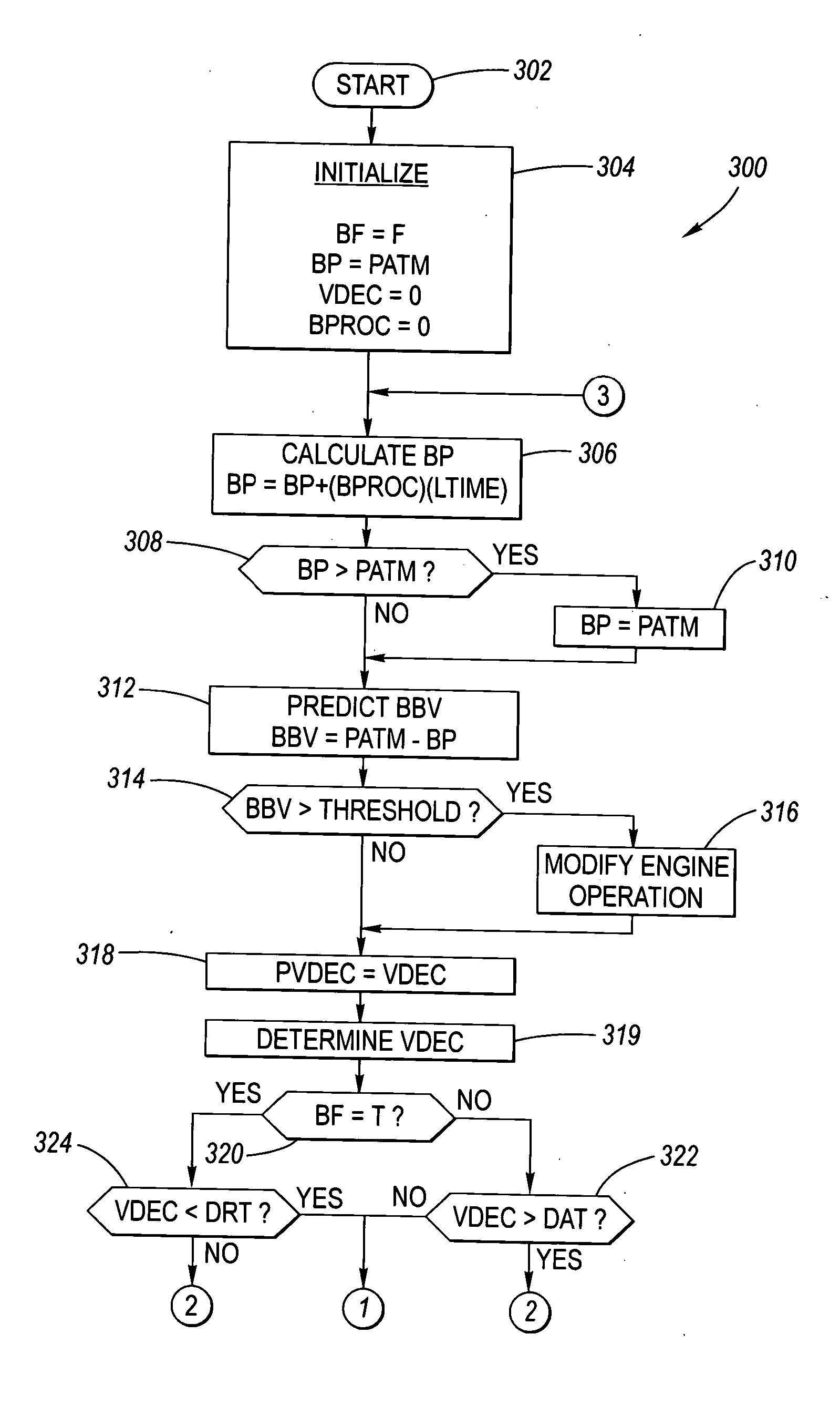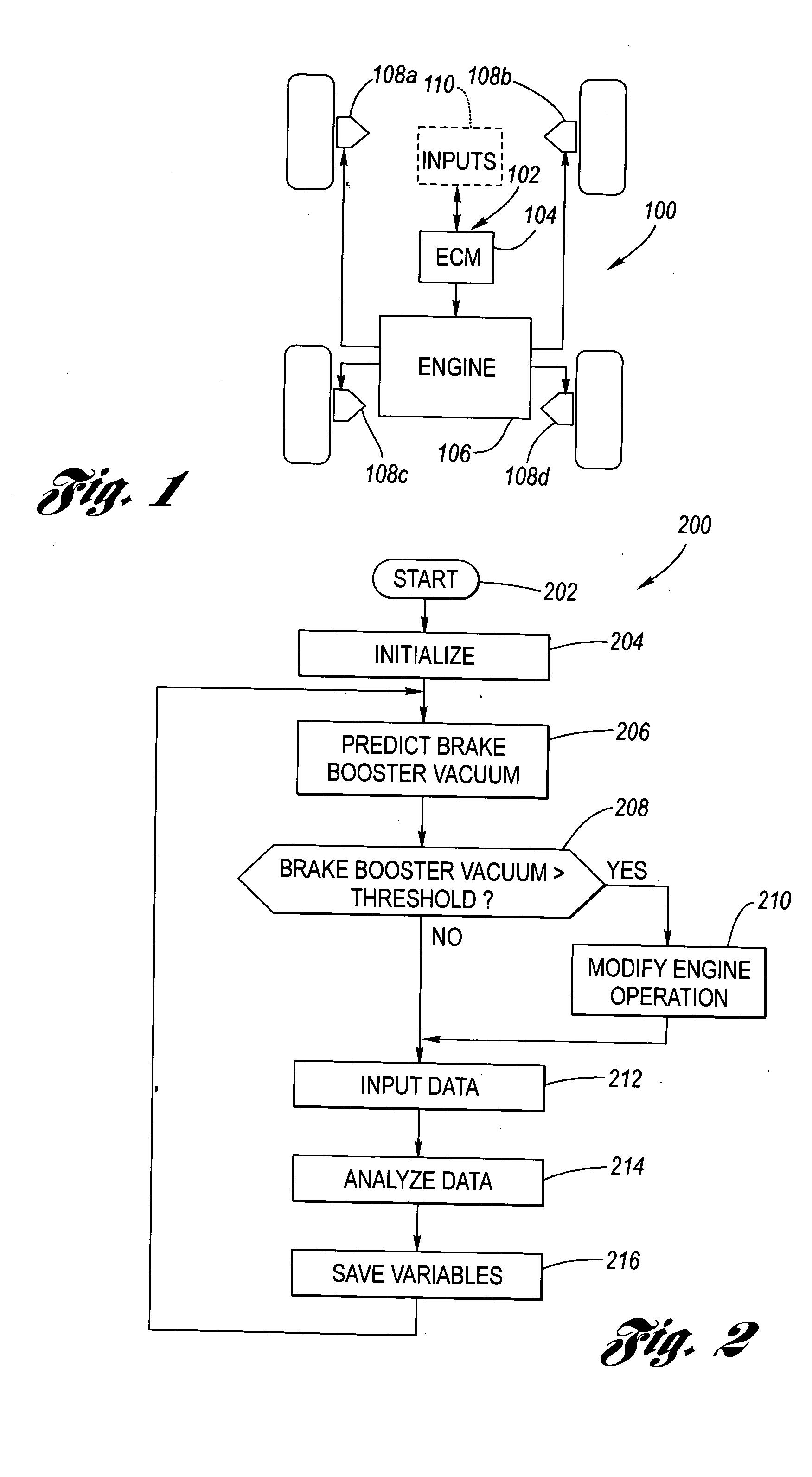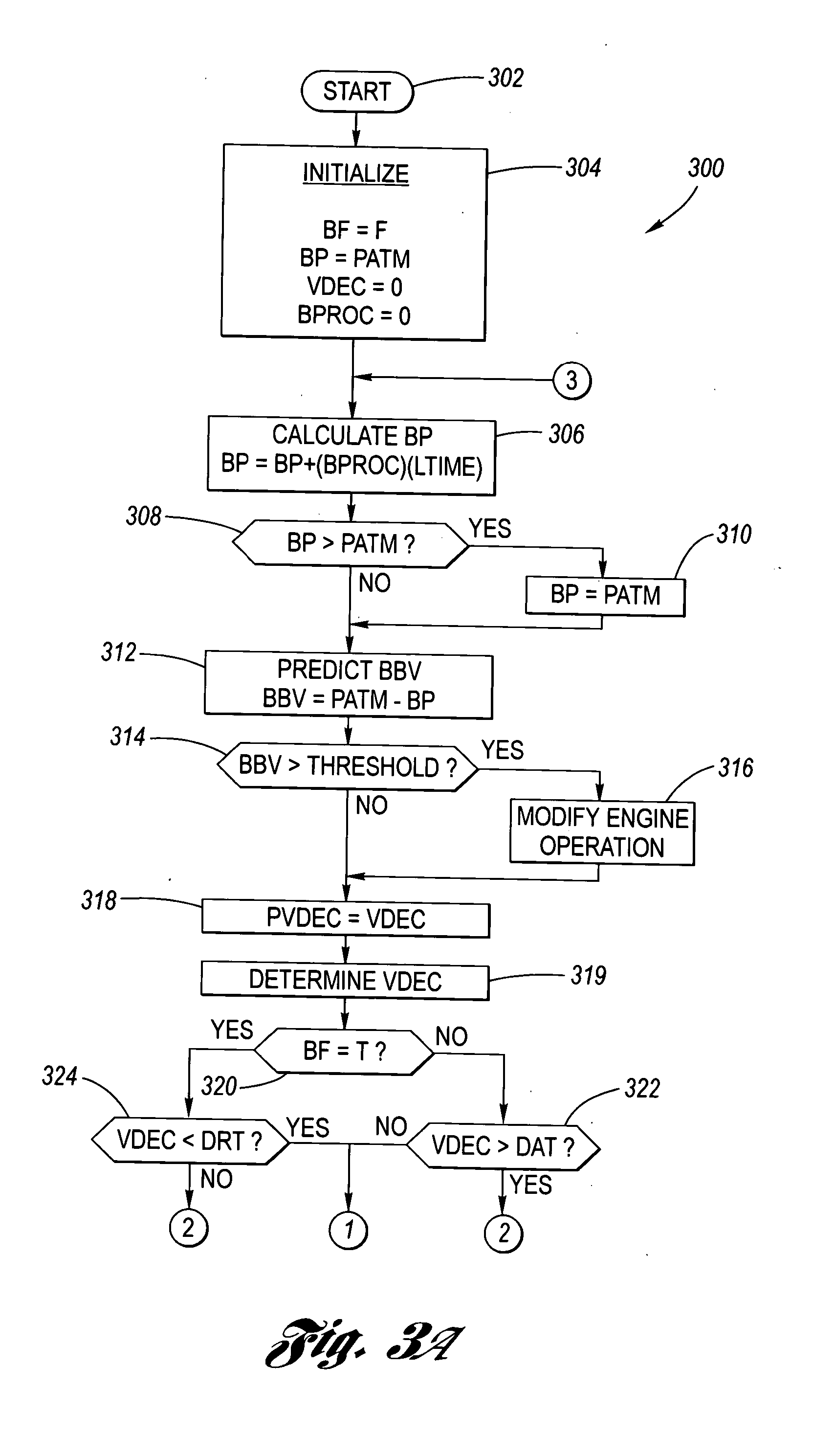Brake booster vacuum prediction algorithm and method of use therefor
a technology of brake booster and vacuum prediction algorithm, which is applied in the direction of brake system, electric control, machine/engine, etc., can solve the problems of increased cost per vehicle, insufficient brake booster vacuum to meet vehicle braking requirements, and even higher cost per vehicle, so as to improve the vacuum in the intake manifold
- Summary
- Abstract
- Description
- Claims
- Application Information
AI Technical Summary
Benefits of technology
Problems solved by technology
Method used
Image
Examples
Embodiment Construction
[0019] Referring now to the Drawings, FIG. 1 is a schematic representation of a motor vehicle brake system 100. The brake booster vacuum prediction algorithm according to the present invention 102 resides, preferably, within the engine control module (ECM) 104. The ECM 104 controls the operation of the vehicle engine 106 and, through intake manifold vacuum 106V, the brake booster vacuum of the brake booster 112 providing brake pedal 116 assist to the master cylinder for actuation of the brakes 108a, 108b, 108c, 108d of the vehicle. External vehicle inputs 110 may be provided to the ECM 104 for purposes of operation of the present invention.
[0020]FIG. 2 is an overview flow chart algorithm 200 of the brake booster vacuum prediction algorithm according to the present invention. The algorithm 200 starts at Block 202 through the main engine controller or ECM then control passes to Block 204 where initialization of variables and parameters occurs. Brake booster vacuum is then predicted a...
PUM
 Login to View More
Login to View More Abstract
Description
Claims
Application Information
 Login to View More
Login to View More - R&D
- Intellectual Property
- Life Sciences
- Materials
- Tech Scout
- Unparalleled Data Quality
- Higher Quality Content
- 60% Fewer Hallucinations
Browse by: Latest US Patents, China's latest patents, Technical Efficacy Thesaurus, Application Domain, Technology Topic, Popular Technical Reports.
© 2025 PatSnap. All rights reserved.Legal|Privacy policy|Modern Slavery Act Transparency Statement|Sitemap|About US| Contact US: help@patsnap.com



